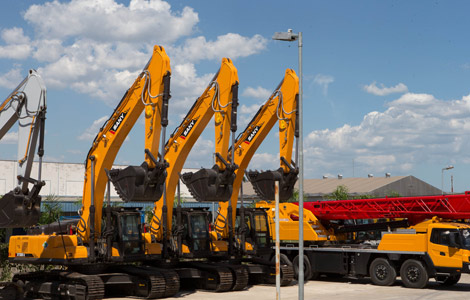Canada, China to build eco-district
Updated: 2014-09-13 03:23
By WANG RU in Beijing(China Daily Canada)
|
||||||||
Seen as a large-scale example for other Chinese cities to follow
With rich timber resources and developed green-building technologies, a Canadian non-profit organization will build an environment friendly area in Tianjin, the largest coastal city and busiest port in northern China.
Canada's ministry of Natural Resources Canada (NRcan) signed a memorandum of understanding on Sept 4 at the Canadian embassy in Beijing. Canada Wood, established by NRcan and China, will build the 2-square-kilometer area in Tianjin's Binhai as an example of building a green building for other Chinese cities.
In the next five years, other industries in Canada will have opportunities to provide wood, as well as green-building solutions and technologies in the district, according to the MOU.
"Canada sees the tremendous demand for green-building materials and technologies for China's urbanization," said Greg Rickford, minister of NRcan, during the signing ceremony.
"Canada's wood can and should play a significant role in China's green building goals," said Rickford, who visited China to participate in last week's Asia-Pacific Economic Cooperation (APEC) Energy Ministers' meeting.
In 2013, China's state council issued requirement that by 2020 50 percent of new buildings should meet the standards of green housing.
Chen Rong, an official with China's ministry of Housing and Urban-Rural Development (MOHURD), said the country will launch its new standards for green building in 2015.
"The Chinese government is promoting using environmental and energy-efficient construction material and technology, including wood," said Chen. "Though Chinese people have a long tradition of wood building, for instance the Forbidden City, the scarce forest resources and large need of housing have made it impossible to develop wood housing and technology in the past decades."
"Now we welcome that Canada can provide high-quality wood products and green construction technologies," said Chen.
Canada's 400 million acres of forests cover about half the nation's total area, and accounts for 10 percent of the Earth's total forest. Wood export from Canada to China has seen dramatic rise in the past decade, from 104 million Canadian dollars in 2004 to 1.9 billion in 2013, making Canada China's biggest softwood supplier by replacing Russia.
"There are misconceptions of using wood in construction in the concerns such as durability and security," said Fred Spoke, managing director of Canada Wood in China.
"With the right construction technology, wood frames in construction have great performances in reducing carbon emission and resisting earthquake," said Spoke.
Collaborating with real-estate developers and local governments, Canada Wood has introduced wood from Canada for projects across China, including resorts, schools and care centers.
"China has the world's largest and fastest-growing construction market, so It is wise to use wood to meet the construction needs and fulfill the government's promise on cutting emission," said Guy Saint-Jacques, Canada's ambassador to China. "Canada leads the world on sustainable forest management, which ensures stable domestic and overseas supplements and environmental protection of forest land," he said.
"The imports from China stimulated Canada's timber industry and created more jobs," said Song Yijun, counsellor of the commercial office of Ontario at the Canadian embassy.
"Hundreds of containers of lumber from Ontario are being shipped to China every week," said Song, who told about how a Chinese floor factory helps in Chesley, Ontario, helps its economy.
wangru@chinadaily.com.cn

 US teachers learn from China
US teachers learn from China
 BYD's green bus wins award
BYD's green bus wins award
 Sany cracks Brazilian machinery marketplace
Sany cracks Brazilian machinery marketplace
 China, US step up IPR cooperation
China, US step up IPR cooperation
 Shanghai Tourism Festival opens with razzle-dazzle
Shanghai Tourism Festival opens with razzle-dazzle
 Downpour wreaks havoc in SW China
Downpour wreaks havoc in SW China
 Drills and exercises mark World First Aid Day
Drills and exercises mark World First Aid Day
 China's first lady Peng Liyuan hits the right note
China's first lady Peng Liyuan hits the right note
Most Viewed
Editor's Picks

|

|

|

|

|

|
Today's Top News
Silk Road, climate change on agenda
Chinese president arrives in Maldives for state visit
Boosting innovation in Latin America
China, LatAm see rosy trade prospect
US tourist in DPRK gets 6 years of hard labor
China, Central Asia unveil new energy cooperation
Alibaba roadshow bodes well for record-breaking IPO
Chinese plant joins US firm in fuel ingredient production
US Weekly

|

|








